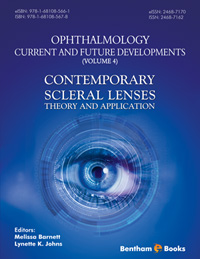Abstract
SHS investigation development is considered from the geographical and historical viewpoint. 3 stages are described. Within Stage 1 the work was carried out in the Department of the Institute of Chemical Physics in Chernogolovka where the scientific discovery had been made. At Stage 2 the interest to SHS arose in different cities and towns of the former USSR. Within Stage 3 SHS entered the international scene. Now SHS processes and products are being studied in more than 50 countries.
Abstract
A regular/normal/non-diseased cornea is characterized by a prolate surface, with no indices of irregularity, warpage or distortion. For consistency, the term regular cornea will be used in this text. Anterior corneal surface elevation and posterior corneal surface elevation of a regular cornea which do not exhibit ectasia or irregularities of either surface. These patients present with common refractive errors: myopia, regular astigmatism, hyperopia and presbyopia. Prescribing scleral lenses for patients with regular corneas or switching patients from other modalities to scleral lenses is very feasible. First, practitioners determine the need, which is improving vision and/or comfort. Scleral lenses can significantly enhance the lens wearing experience of regular cornea patients, especially in astigmatic, presbyopic or marginal dry eye patient populations. For regular cornea patients and the correction of common refractive errors, the risk-to-benefit ratio needs to be evaluated and an appropriate lens selected. In conclusion, scleral lenses are becoming part of practitioners’ standard armamentarium to improve the contact lens experience of their patients.
Keywords:
Astigmatism, Comfort, Convenience, Ease, Environment, Handling, Healthy, HOA, Multifocal, Non-distorted, Normal, Optics, Options, Physiological, Presbyopia, Prolate, Refractive surgery, Regular, Sports, Visual acuity.
Recommended Chapters
We recommend

Authors:Bentham Science Books






